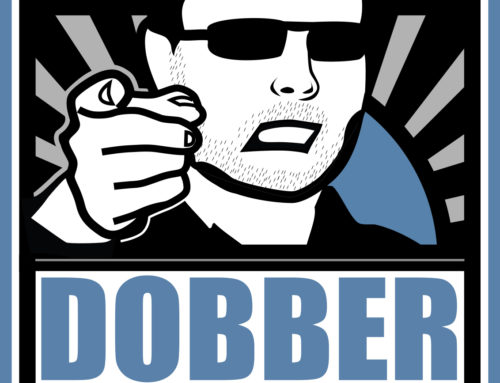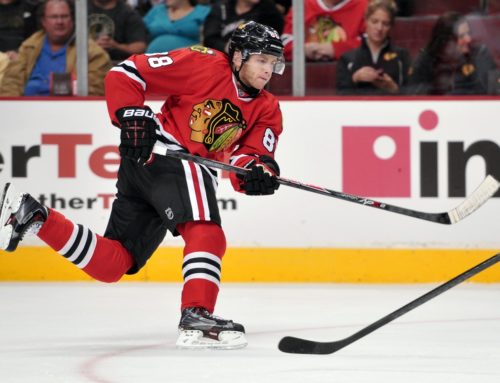Solving the Meniscus Mystery
Justin Goldman
2007-10-22

I’m often dead wrong on predictions, but that’s okay because I love when goalies silence their critics and prove to everyone what horrible analysts they really are. Well, before the season started I severely downgraded Manny Legace and Pascal Leclaire due to the tragic meniscus injuries they suffered last season. Two weeks into the season and so much for THAT lousy line of reasoning.
Not only have they stayed healthy, but they’re two of the most prolific goalies in fantasy hockey leagues. On the surface, this conundrum could be explained due to the fact they’re playing on highly-improved teams. But beneath the surface, both teams are actually better due in large part to the goalies igniting a passionate level of play, instilling confidence in their defensemen and giving their players a reason to hope. So heads up Red Wings, you’re division just got a lot tougher. Chicago, St. Louis and Columbus have quickly turned the lamest division into the most interesting to watch.
So thanks to my lack of judgment with the two, let’s quickly dissect a “meniscus injury” to get a better understanding of WHY I downgraded them in the first place and then try to figure out just why the play of Legace and Leclaire has started off so strong.
What is a meniscus and why is it so important to goaltenders?
Simply put, there are two menisci in each knee, the medial and lateral. Each one rests in between the thigh and shin bones and is composed of tough cartilage that wraps around the bones on which they rest. The medial meniscus is on the inside of your knee and the lateral meniscus rests on the outside. They function in order to distribute your body weight evenly across the knee joint. So without them, your body’s weight would be unevenly applied to your legs and it would cause excessive force in specific areas of the bone, leading to tons of problems including early arthritis and one hell of a gimpy skating stride.
Therefore the meniscus is very critical to goaltenders because flexible knee joints allow them to butterfly and recover back into their stance quickly and efficiently, whether it’s by shuffling laterally or dropping straight down. The most common cause of a goalie tearing the meniscus occurs when their knee joint is bent, and then the knee twists due to a collision or awkward save. The meniscus is C-shaped and has a wedged profile, which basically helps a goalie maintain their balance and stability by keeping the rounded surface from sliding off the flat surface.
But the #1 reason why I downgraded Leclaire and Legace (as I learned through research last year) was because of this fact – the meniscus is nourished by small blood vessels, but also has a large central area that has no direct blood supply. This is what presents a major problem when a goalie injures their meniscus, because that central area tends to never fully heal. In fact, without the essential nutrients supplied by these blood vessels, complete healing cannot even really take place.
So what does this say about them if tearing a meniscus is so harmful to a goalie? Well, it proves they both worked extremely hard during the offseason at strength and conditioning. They have also shown the desire and focus necessary to take advantage of opportunities to be the #1 goalie this year and they both refuse to believe they’re anything less than incredible performers. Ironically, both have had to overcome plenty of scrutiny from the media and fans the past two seasons and both are shaking off the stigma that they are underperformers. So what’s the answer to the meniscus mystery? Confidence and opportunity.
Manny Legace (3-2-0, 2.01 GAA, .930 save %)
Considering Legace went 0-4 in the preseason with a 5.34 goals-against average and .821 save percentage without his top three defenseman, Legace’s play has been incredible to start the season. His hot start has mirrored that of the Blues, who had won four straight before a tough 3-1 loss to Minnesota on Saturday night. But rest assured Legace is still on fire, going 3-1-0 with a 1.51 goals-against average and a .944 save percentage in his last four games. Two of the eight goals he allowed prior to the Minnesota loss even went off his own teammates, so the momentum is still on his side. Everyone is dedicated to blocking shots in front of him and the penalty killing is remarkable at over 90-percent.
Pascal Leclaire (3-2-0, 1.61 GAA, .936 save %, 3 shutouts)
Leclaire’s play is not too surprising due to the fact that he’s so capable, so long as he stays healthy and plays consistently, which always seems to plague young, talented goalies. What does surprise me however, are those three shutouts. I credit most of this to Ken Hitchcock’s defensive-minded system in front of him, which has totally transformed the Blue Jackets into a playoff-contending team. They play with heart and physicality and everyone understands their role. The forwards have been helping out defensively and they’ve played a much more focused game, so there’s great support in front of Leclaire. In last night’s game against the Canucks, Leclaire didn’t even face a shot in the second period, which proves that he’s benefitting from a much-improved defensive system, despite the loss at home.





 BUF
BUF N.J
N.J PHI
PHI MIN
MIN FLA
FLA WPG
WPG VAN
VAN TOR
TOR CGY
CGY